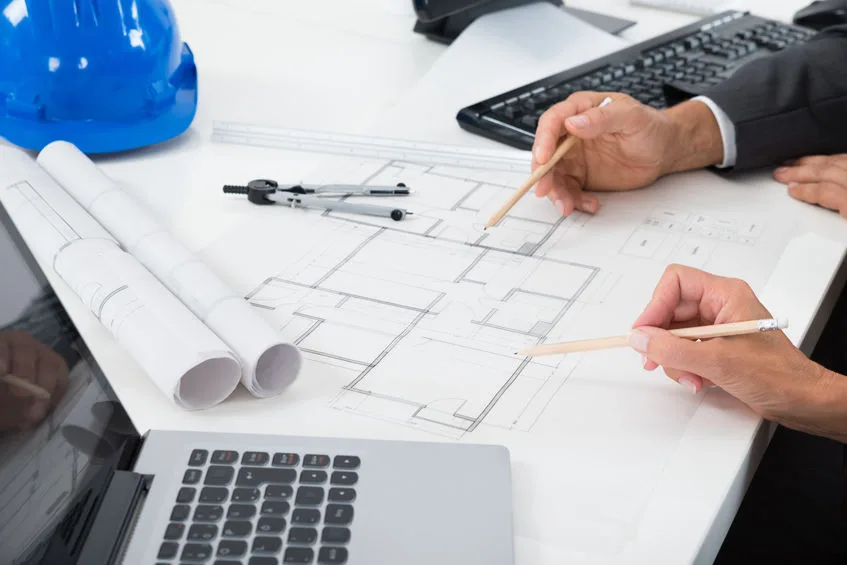Architect Tips for Planning Contemporary Residential Spaces
Architect Tips for Planning Contemporary Residential Spaces
Blog Article
Comprehending the Diverse Career Paths Available for Aspiring Architect
As an ambitious Architect, you have a world of occupation paths waiting for you. Whether you're drawn to typical architecture or the nuances of sustainable style, there's a particular niche that lines up with your rate of interests.
Conventional Architecture: Designing Buildings and Structures
Typical architecture concentrates on creating buildings and frameworks that blend capability with visual allure. Your designs can reflect cultural heritage, showcasing local customs while meeting modern requirements.
You'll establish skills in preparing, model-making, and site evaluation, permitting you to envision and communicate your ideas effectively. Engaging with customers, you'll require to comprehend their vision and translate it into practical layouts.
Furthermore, developing codes and sustainability methods are essential in your job, guaranteeing your frameworks are environmentally pleasant and safe. As you expand in your occupation, you'll find possibilities in residential, commercial, or perhaps remediation jobs, each offering distinct challenges. Welcoming typical architecture leads the way for a meeting profession that pays homage to the past while shaping the future.
Urban Planning: Forming Areas and Public Spaces
As an aspiring Architect, you can play an important function as a metropolitan coordinator, transforming how neighborhoods engage and work. By employing neighborhood engagement methods, you'll ensure that locals have a voice fit their setting. And also, integrating sustainable style concepts will certainly aid develop rooms that not only satisfy today's needs yet additionally protect the future.
Duty of Urban Planners
While many might assume of engineers as the sole enthusiasts behind buildings, urban coordinators play a necessary duty in forming the more comprehensive landscape of areas and public rooms. They assess land use, zoning laws, and neighborhood needs to develop lasting settings that improve top quality of life. By collaborating with various stakeholders, you'll help develop parks, transportation systems, and suburbs that advertise social communication and availability. Urban organizers additionally concentrate on ecological considerations, ensuring that developments incorporate green areas and support biodiversity. Your knowledge in spatial design and community dynamics permits you to visualize future growth while maintaining social heritage. In this critical role, you'll straight affect how people experience their environments, making every project a chance for positive modification.
Area Interaction Strategies
Reliable area involvement methods are vital for city organizers to ensure that the voices of homeowners are listened to and valued in the planning process. To foster significant dialogue, you must prioritize open forums and workshops where community participants can share their concepts and concerns. Use surveys and social media sites to get to a more comprehensive target market, ensuring varied point of views are consisted of. Working together with local organizations can enhance trust and assist in deeper connections. It's crucial to offer clear information about suggested projects and decision-making procedures, permitting locals to really feel informed and encouraged. By proactively listening and incorporating responses, you'll create areas that show the area's demands, inevitably bring about even more sustainable and effective city settings. Embrace transparency and continuous discussion for long lasting impact.
Sustainable Design Principles
When developing urban rooms, integrating lasting style concepts is essential for creating atmospheres that flourish both ecologically and socially. Take into consideration integrating environment-friendly areas, like gardens and parks, to enhance biodiversity and improve air quality.
Designing with water conservation in mind is additionally essential-- think concerning rain gardens and absorptive surface areas to take care of stormwater. Involving area members during the planning process warranties that the areas you produce fulfill their needs and urge social communication. By embracing these principles, you'll add to vibrant, sustainable urban landscapes that benefit every person.

Landscape Architecture: Creating Lasting Exterior Settings
As you explore landscape design, you'll discover essential design concepts that create useful and lovely outdoor spaces. Lasting methods play a vital duty in ensuring these environments flourish while lessening environmental influence. Plus, you'll discover a range of profession chances that allow you to make a real distinction in just how individuals interact with nature.
Design Principles in Landscape
Recognizing style concepts in landscape architecture is necessary for producing lasting outside environments that integrate with nature. You'll require to consider aspects like equilibrium, range, and proportion to assure your styles feel natural and welcoming. Including indigenous plants not only boosts biodiversity but likewise lowers water usage, making your landscape resistant. Consider the flow of area and just how people interact with it; pathways and seating areas need to invite exploration and relaxation. Furthermore, take note of seasonal changes, making with materials that enhance the surroundings year-round (Architect). By focusing on sustainability and aesthetic appeals, you can develop outside areas that enhance the neighborhood and advertise wellness. Welcoming these concepts will set a solid structure for your profession in landscape architecture.
Lasting Practices Overview
Sustainable techniques in landscape architecture not only concentrate on visual appeals yet likewise focus on ecological wellness and source preservation. By integrating native plants, you boost biodiversity and lower the requirement for chemical fertilizers and chemicals. Applying effective watering systems helps save water and lessens overflow, protecting close-by environments. You can develop areas that advertise soil wellness, such as exercising and making use of organic products permaculture principles. Additionally, incorporating environment-friendly framework, like rainfall gardens and porous sidewalks, help in stormwater management and reduces metropolitan warmth. You contribute to a healthier world and offer areas that promote area link when you create outside environments with sustainability in mind. Eventually, these methods ensure your styles profit both individuals and the setting for many years ahead.
Career Opportunities Expedition
With a strong foundation in sustainable methods, landscape architecture provides a variety of profession paths that allow you to make a meaningful influence on the environment. You can work as a landscape developer, creating visually pleasing and functional exterior areas, or specialize in environmental repair, aiding to revive damaged environments. Urban coordinators commonly collaborate with landscape architects to produce green rooms in urban settings, boosting city livability. If you're passionate concerning education, consider becoming a landscape design instructor, motivating future generations. Furthermore, you may collaborate with nonprofits concentrated on ecological sustainability or engage in research to introduce new practices. Each course not just shapes lovely atmospheres however likewise fosters a much healthier planet for future generations.
Lasting Design: Concentrating On Eco-Friendly Practices
As you explore your profession in architecture, welcoming environmentally friendly practices can set you check here apart in a competitive area. Sustainable design concentrates on producing buildings that reduce ecological impact while enhancing passenger wellness. By including renewable materials, energy-efficient systems, and lasting structure techniques, you'll add to a greener future.
Beginning by getting understanding of green qualifications like LEED or BREEAM, which can boost your credentials. Consider how all-natural light, air flow, and thermal efficiency can enhance style. Work together with designers and environmental specialists to innovate remedies that lower waste and preserve sources.
Don't forget the importance of neighborhood involvement-- engaging local stakeholders can influence styles that balance with the atmosphere. As clients significantly focus on sustainability, your proficiency in green practices will not just draw in tasks but additionally satisfy your passion for accountable architecture. Embrace this essential aspect of the profession, and see your career prosper.
Historical Conservation: Securing and Restoring Social Heritage
While you commence on your building journey, consider the essential function of historic conservation in preserving our cultural heritage. This field concentrates on the protection and restoration of significant buildings, websites, and structures that tell the stories of our past. By involving in historical preservation, you'll help protect the architectural legacy that shapes community identity.
As a historic conservation Architect, you'll analyze historic importance and analyze the condition of frameworks. You'll function closely with historians and guardians to assure authentic repair strategies are employed. This career path permits you to blend creative thinking with research study, allowing you to design services that respect original materials and craftsmanship.
Your work not only adds to sustainability by reusing existing structures yet additionally fosters a feeling of pride within areas. Welcoming this course will aid you end up being a guardian of background, protecting the tales and aesthetic appeals that improve our lives.
Interior Architecture: Enhancing Indoor Spaces
Historic conservation click here and indoor design both share a commitment to enhancing the constructed atmosphere, but they focus on various facets. While historic preservation stresses keeping a framework's historical and cultural worth, interior design zeroes in on enhancing indoor areas for capability and aesthetic appeals.
As an ambitious Architect, you'll locate that interior architecture enables you to mix creativity with technological abilities. You'll create spaces that not only look good yet likewise promote convenience and effectiveness. This area involves comprehending just how light, color, and products communicate within an area, influencing mood and functionality.
You'll work on numerous projects, from residential homes to business offices, ensuring that each setting fulfills the needs of its residents. By prioritizing user experience, you can change insides right into functional and inspiring areas, making a significant effect on just how individuals engage with their surroundings. Accept the chance to enhance interior environments and form the means people function and live.
Industrial Layout: Merging Capability With Appearances
Industrial design plays an important duty in producing items that flawlessly blend aesthetic appeals with capability, making certain that what you use day-to-day is not only aesthetically attractive but additionally useful. As an aspiring Architect, you can involve on your own in this field, focusing on designing every little thing from furniture to consumer electronic devices. Your job involves recognizing user requirements, products, and manufacturing procedures, enabling you to create ingenious services that improve everyday experiences.
In commercial style, you'll frequently collaborate with marketers, engineers, and suppliers, making certain that your designs are not only stunning however additionally feasible. This occupation course offers a dynamic environment where imagination satisfies practicality, making it a fulfilling choice for architects interested in forming the products of tomorrow.
Regularly Asked Questions
What Educational Accreditations Do I Need to Become an Architect?
To end up being an engineer, you'll need a specialist degree in style, normally a Bachelor's or Master's. Additionally, you'll need to finish an internship and pass the Architect read more Enrollment Assessment to practice legally.
Exist Qualification Needs for Various Building Job Paths?
Yes, there're certification requirements for various building paths. Architect. You'll need to pass examinations, total teaching fellowships, and in some cases pursue specialized training, depending on your chosen emphasis, like landscape design, urban style, or historic conservation
What Software Abilities Are Crucial for Designers Today?

Exactly How Can I Gain Practical Experience While Studying Design?
You can acquire sensible experience by interning at architectural companies, taking part in design competitions, volunteering for area jobs, or working together with schoolmates on real-world tasks. These opportunities enhance your abilities and construct beneficial connections in the sector.
What Task Opportunities Exist Outdoors Conventional Architecture Firms?
You can discover numerous work possibilities outside traditional architecture firms, like urban planning, interior style, landscape design, construction monitoring, property growth, or perhaps functions in sustainability consulting. Each deals distinct obstacles and rewards.
Whether you're drawn to traditional style or the subtleties of sustainable style, there's a niche that aligns with your interests.When designing urban spaces, incorporating sustainable layout concepts is crucial for developing environments that grow both ecologically and socially.As you explore landscape architecture, you'll uncover necessary layout principles that produce functional and beautiful exterior areas.Recognizing style principles in landscape style is necessary for creating lasting outdoor atmospheres that harmonize with nature.In commercial design, you'll often work together with producers, marketing experts, and engineers, ensuring that your styles are not just beautiful but additionally feasible.
Report this page